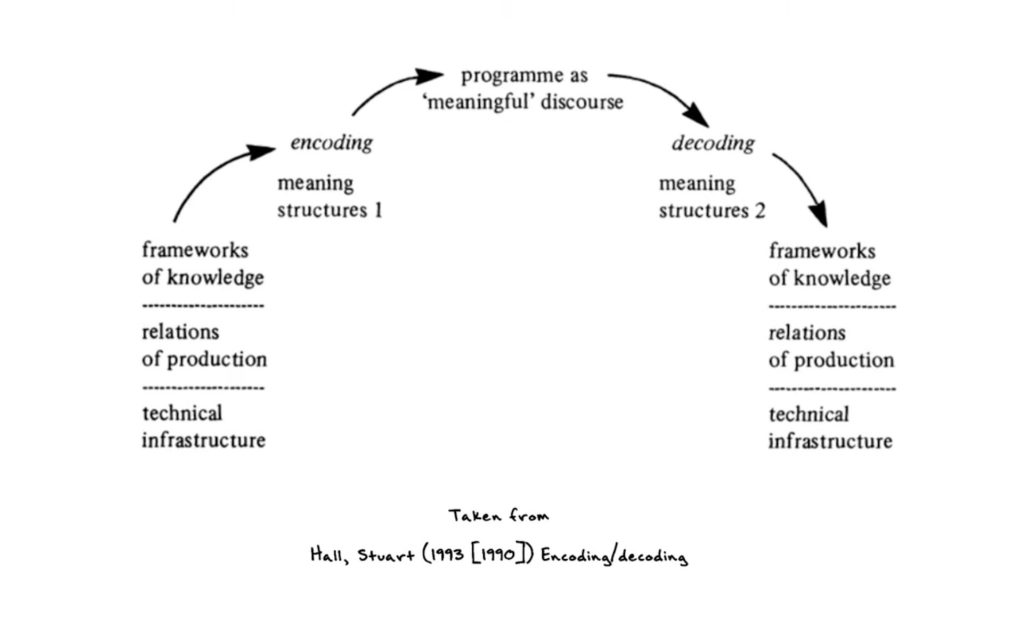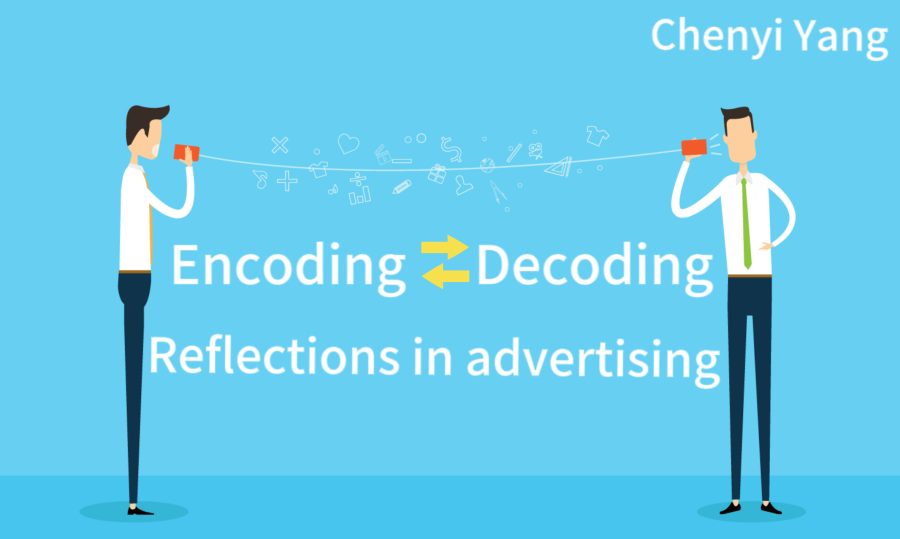What is encoding and decoding

According to British scholar Stuart Hall’s model of communication encoding and decoding, encoding refers to the process by which the sender of a message transforms ideas, information, or meaning into a transmittable form, for example, through the medium of language, images, and sound. Decoding, on the other hand, is the process by which the receiver of a message takes the encoded information received and actively understands and interprets it in the light of his or her own experience and cultural background.
Encoding and Decoding in Advertising
Communication is achieved by decoding and encoding messages. In advertising, messages are transmitted between encoding (selection of symbols and images) by the creator of the advert and decoding (viewer’s understanding of these symbols and images) by the viewer (Džanić, M., 2013).
Let’s analyse the advertisements for the new range of iPhones released by Apple at this year’s launch event from the perspective of encoding and decoding respectively.

In terms of encoding, Apple creates adverts for the newly released iPhones, in which Apple’s advert creators need to encode the phone’s features, functionality, and selling points that appeal to consumers into an engaging advert video. By choosing appealing high-definition footage, as well as text descriptions that highlighted the phone’s capabilities, the ad creators encoded the message they wanted to convey.
When decoded, different people may understand these adverts in different ways. For example, some people may focus on the performance and innovativeness of the phone; while others may pay more attention to the design and colour scheme of the phone in the advertisement. They see the same advertisement as if it were the same encoded message, but the decoding result is influenced by many factors such as the receiver’s culture, context, and experience, thus resulting in different concerns and interpretations.
conclusion

The processes of encoding and decoding are interrelated and constitute a two-way street of information transfer. The encoder wishes to convey the message effectively by selecting appropriate symbols and media, while the decoder endeavours to follow the intention of the encoder in comprehending the message, whilst being influenced by his or her own experiences and perspectives.
Stuart Hall’s Encoding and Decoding model, on the other hand, emphasises the proactive nature of the message receiver in decoding the message. Decoding is a subjective and selective process in which the receiver can interpret the message differently based on his or her own experience and point of view. This theoretical theory prompts consideration of the complexity of messaging and helps to promote dialogue between different perspectives. And by understanding the plurality of understandings that may result from different decoding, people can better communicate and understand each other.
If you want to learn more about encoding and decoding, you can watch the following video, which gives you a good understanding of the encoding and decoding model proposed by Hall:
REFERENCE
Hall, S. (1993). Encoding, Decoding, in During, S. The Cultural Studies Reader, 507-517.
Hall, S., 2000. Encoding/decoding. Media studies: A reader, 3, pp.28-38.
Džanić, M., 2013. The semiotics of contemporary advertising messages: Decoding visuals. Jezikoslovlje, 14(2-3), pp.475-485.


The forms of advertising are becoming more and more diverse, with different types of advertising words that attract customers. Although the language is different, the purpose is to sell products and attract customers. Everyone has a different understanding, which happens to give each customer a different perspective. When spreading the same information, the crowd will have different ideas and perspectives.
This blog provides an in-depth analysis of Stuart Hall’s model of encoding and decoding communication and applies it to an example of analyzing Apple’s latest iPhone line of advertisements, successfully applying Hall’s model of encoding and decoding to a specific, modern case (an Apple iPhone advertisement), demonstrating the application of the theory to a real-world situation, and using clear examples of the encoding process. Secondly this blog is extremely critical thinking, thinking critically about the process of creating and receiving media messages. Not only that, great videos are utilized at the end to further explain. Looking forward to your next blog!
Hi Chenyi, I found this blog post of yours on “Encoding and Decoding in Advertising” particularly enlightening. It helped me understand Stuart Hall’s model of advertising communication, particularly using Apple’s iPhone advert as an example. The difference between encoding and decoding is fascinating; it is intriguing to see how the same advert can be interpreted differently depending on personal experience and cultural background. This article deepened my understanding of the complexity of advertising communication and the subjective nature of message reception. It reminded me that a single communication message can generate many different interpretations and that it is important to consider these different perspectives when creating and interpreting media messages.